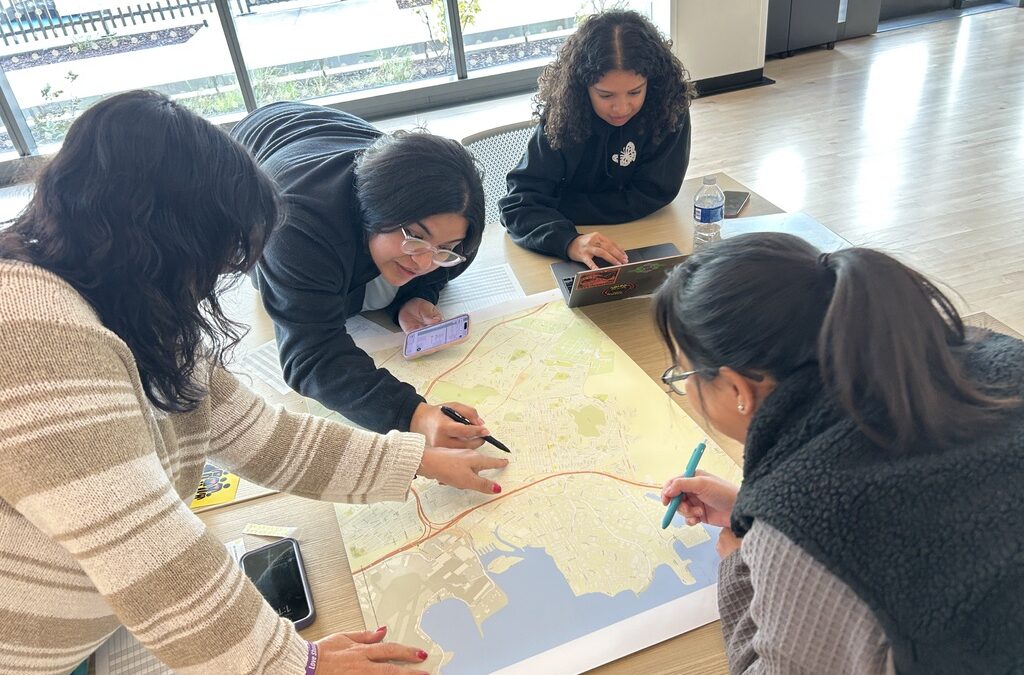
by Ileana Martinez | Jul 10, 2025 | Affiliate News
Redwood City, CA – Along the bustling peninsula between San Francisco and San Jose, a powerful force for community empowerment thrives. El Concilio of San Mateo County (ECSMC) has stood as a pillar of support for underserved communities since its founding in 1980. Committed to equity, advocacy, and service, El Concilio continues to address education, employment, and health disparities affecting low-income, non-English-speaking residents. Through a multifaceted approach that includes direct services, coalition-building, and policy advocacy, the organization is a guiding light for many.
The mission of Dr. Ana Angel Avendaño, Executive Director of El Concilio, is clear: “We are doing the good work, and people are seeing it. It gives us hope and affirmation that we’re on the right path. Recognition like this reminds us that we are making a difference.”
El Concilio has always sought to elevate the voices of those often left unheard. Originally established to address economic development, education, health, workforce empowerment, and cultural affairs, the organization has expanded its reach while staying true to its core values. Its impact is felt across San Mateo County, where it provides critical resources to families, advocates for systemic change, and fosters the leadership of future generations.
Empowering Leaders, Building Capacity
One of El Concilio’s core priorities is leadership development. The organization works to create a long-term impact by equipping community members, staff, and board members with the skills and knowledge to take on leadership roles.
“Our goal is to create pathways,” Avendaño explains. “We want people to have opportunities to advance—to be the next executive directors and community leaders. Too often, talented individuals, particularly those from immigrant backgrounds, face barriers to upward mobility. We are working to change that.”
Through strategic leadership programs and mentorship initiatives, El Concilio is nurturing a new generation of changemakers. The organization’s efforts extend beyond internal development, empowering community members to engage in civic processes and take on influential roles in public policy.
This investment in leadership is both an internal and external commitment. El Concilio recognizes the value of professional development among its team members and board, ensuring that those serving the community have the tools and training to maximize their impact.
A Voice for Public Policy and Advocacy
Originally established as a public policy organization, El Concilio has deep roots in advocacy. The need for policy engagement has grown in recent years, with housing instability and immigration taking center stage. The COVID-19 pandemic further amplified these needs, exposing systemic inequities and reinforcing a trusted organization’s need to champion vulnerable populations’ rights.
“Our community is looking for someone to bring people together, to keep them informed about policies that impact them,” says Avendaño. “They need the tools to advocate for themselves, and that’s where we come in.”
El Concilio’s local and statewide advocacy efforts include forming coalitions with other organizations to drive meaningful policy change. From housing rights to environmental justice, the organization actively works so that marginalized voices are heard.
One recent initiative is the South San Francisco coalition-building effort. El Concilio has worked to unite various stakeholders, including nonprofit organizations, schools, and city officials. “At first, people were siloed, operating independently and unsure how to collaborate,” Avendaño recalls. “But over time, through listening and relationship-building, we’ve created a space to come together and amplify our collective impact.”
A Lifeline for Families: Safety Net Navigation
One of the most critical aspects of El Concilio’s work is its safety net navigation program. With locations in East Palo Alto, North Fair Oaks, and satellite office hours with North County partners in South San Francisco and Daly City, the organization is a trusted resource for individuals and families seeking essential services.
“We hear from families who don’t know where to turn,” Avendaño shares. “Parents come to us asking where they can get vaccines for their kids, where they can access legal aid, or how to navigate public benefits. Our role is to connect them to the right resources and advocate for better support systems.”
This program addresses immediate needs and fosters long-term stability by guiding individuals through complex systems with culturally relevant and accessible services. El Concilio strives to see that families are taught how to build pathways toward economic security and self-sufficiency.
Strengthening Community Through Collaboration
El Concilio understands that real change happens through partnerships. The organization has taken a leading role in coalition-building, particularly in South San Francisco, where a lack of rooted community organizations has posed challenges for residents seeking support.
“We can’t do this work alone,” Avendaño emphasizes. “When one voice speaks, it’s powerful—but when five voices come together, we can move mountains. That’s why coalition-building is so important.”
By convening nonprofits, city officials, school districts, and local leaders, El Concilio is creating a network of support that nurtures sustainable, long-term solutions for the community. One of the biggest challenges, Avendaño explains, is overcoming the perception that a wealthy region like Silicon Valley does not need social services.
“People assume that resources are readily available because we’re in an affluent area,” she says. “But there are pockets of extreme need, and it’s our job to advocate so that these communities are not overlooked.”
Bridging Generations Through Education and Digital Equity
One of the organization’s standout initiatives is its digital equity program, which fosters intergenerational learning. High school students assist elders and community members with technology, teaching them how to navigate online services, use social media, and access essential resources.
“I love seeing that exchange,” Avendaño says with enthusiasm. “It’s about education at every level—whether it’s a young person teaching a senior how to use a smartphone or an experienced community member passing down wisdom about civic engagement.”
This commitment to education extends beyond technology, with programs designed to enhance financial literacy, climate justice awareness, and workforce development for all ages.
A Bright Future Ahead
El Concilio of San Mateo County is more than just a nonprofit—it is a lifeline, an advocate, and a force for change. As the organization continues to evolve, it remains dedicated to elevating community voices, fostering leadership, and providing critical services to those in need.
“We have to continue to advocate, to keep showing up, and to keep fighting for our communities,” Avendaño says. “This work is not easy, but it’s necessary. And as long as we’re making a difference, we’ll keep pushing forward.”
With a legacy of impact and a future full of promise, El Concilio is setting the standard for genuinely serving a community.
To see the work of El Concilio of San Mateo County visit their website:
https://www.el-concilio.org/
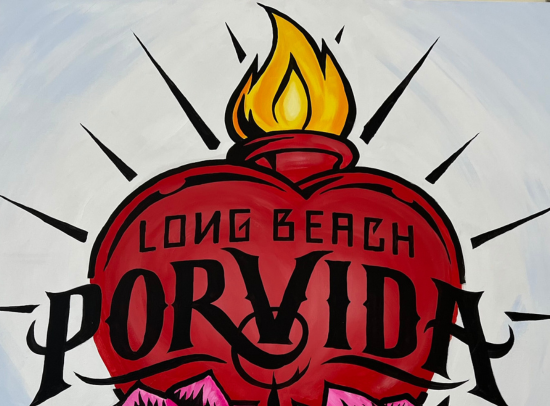
by Ileana Martinez | Nov 6, 2024 | Affiliate News
Centro CHA is in the heart of Long Beach, California, the second largest city in Los Angeles County. The organization serves a growing Latino population in a coastal community contrasted by multi-million dollar homes with ocean views and nearby neighborhoods where families get by on minimum wage essential jobs. Yet, for both layers of the socio-economic strata, Centro CHA brings hope of change for a city with a storied history of opportunity in the Golden State.
“In Long Beach, there’s a misconception of prosperity,” says Jessica Quintana, Executive Director. “We’re addressing disparities through advocacy groups and coalitions, ensuring voices from historically neglected areas are heard. Our strong resident leadership, including women, men, and youths, advocates for justice and equality, making a tangible difference in City Council and beyond,” she adds.
Established in 1992 and officially incorporated in 1999, Centro CHA has remained steadfast in its mission to uplift the Latino/Hispanic community through social and economic development initiatives. At the core of Centro CHA’s ethos lies a commitment to fostering a thriving community where investments in low-income neighborhoods are prioritized and residents are empowered to lead sustainable lives. Their vision extends beyond more service provision; it encompasses a holistic approach to community development that addresses interconnected housing, education, employment, and civic engagement issues. “We have weathered peaks and valleys, facing unique challenges as a Latino-led organization in Long Beach,” says Quintana. “Proudly, our leadership, vision, and team are focused on uplifting our community, especially during crises like the pandemic. When our Latino community was disproportionately hit by economic downturns and faced hardships, our resilient team ensured that essential services continued despite personal risks. Our dedication remains steadfast in providing economic development and immigration support to our seniors, parents, youths, and children,” says Quintana.
Centro CHA’s future is brighter because of a planned Latino Cultural Center. With $4 million earmarked, the organization is making strides towards its realization, alongside a Mercado for economic empowerment and a hub space for workforce development, signaling a new era of ownership and impact.
Unlike other organizations, Centro CHA’s integrated approach ensures that individuals accessing their services are not limited to a single program. Instead, they are welcomed 9 SER America · Spring 2024into a supportive network offering a myriad of resources tailored to their needs. This commitment to holistic support has earned Centro CHA the trust and respect of its community members, fostering long-term relationships built on mutual understanding and collaboration.
Quintana says none of this progress has been by chance. “Our board’s diverse expertise fortifies Centro CHA’s mission. With a retired city manager offering institutional insights, a union leader bringing resources for advocacy and job creation, and an immigration lawyer ensuring compliance with data, is crucial. Our Latino Economic Impact Report revealed the overlooked contributions of our community, demanding overdue reinvestment,” she adds. legal obligations, our team is robust. As our organization evolves, we seek additional talents to bolster our efforts in economic development and immigration services. Together, we navigate challenges and envision a brighter future for our community.”
Economic inclusion serves as a cornerstone of Centro CHA’s work. Recognizing the Latino community’s systemic barriers, Centro CHA tirelessly advocates for equitable access to resources and opportunities. For them, creating a more just and equitable Long Beach is not just a goal—it’s a moral imperative ingrained in every aspect of their organization.
Quintana said leadership has been vital to the organization’s progress. “We were very strategic in organizing a board aligned with our mission and vision, tapping into the wealth of expertise within our community’s strong leaders, many of whom grew up in Long Beach and rose to executive positions. It’s crucial to have leadership deeply connected to the community’s needs and aspirations,” declares Quintana.
Centro CHA’s impact extends beyond its physical location; it reverberates throughout the city, shaping policies and attitudes toward economic and social justice. Through its team’s dedication and community leaders’ support, Centro CHA envisions a future where unemployment rates plummet, neighborhoods thrive, and every resident can reach their full potential.
“Taking control of our future is exhilarating yet demanding,” Quintana admits. “Yet, for the first time, there’s widespread investment in our community’s needs. Advocacy, backed by data, is crucial. Our Latino Economic Impact Report revealed the overlooked contributions of our community, demanding overdue reinvestment,” she adds.
The economic report isn’t just a compilation of data; it’s the cornerstone upon which Centro CHA designs its strategic programming, filling crucial voids in community services. Similarly, the organization’s dedication extends beyond its walls, as local government agencies and partners eagerly await this vital information to inform their initiatives.
“Addressing youth poverty is one of my imperatives,” says Jessica, who grew up in Long Beach. “Schools lack the necessary pathways, and parental guidance is often limited. Leadership is vital in creating and engaging young minds in economic opportunities. Even above minimum wage, the current economy isn’t sufficient, exacerbating economic disparities among young people.”
Through one-on-one relationships with case managers, youths benefit from a roadmap to success and the keys to unlocking their full potential. Whether preparing paperwork for GED courses or navigating financial aid options, Centro CHA is a steadfast companion on every step of the journey.
Similarly, for over two decades, Centro CHA has stood as a stalwart advocate for immigrant rights in the Greater Long Beach community, with a steadfast commitment to empowering its residents. In a world where immigrant rights are often challenged, Centro CHA is a testament to the power of compassion and collaboration in creating a brighter future for all. “The key lies in vigilance, strategic connections, and clarity about our community’s needs,” vows Quintana.
“Promising relationships with local officials, educational institutions, and state entities signal progress. The pandemic exacerbated existing disparities, demanding innovation and intentional action. We must work together for positive change to prevent further marginalization of the Latino community in Long Beach. We can and must deliver the opportunity of a promising future for all.”
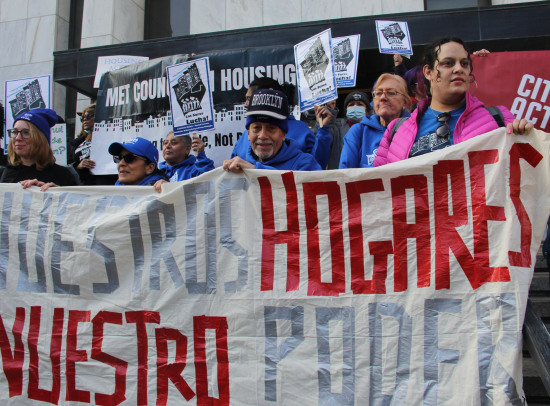
by Ileana Martinez | Aug 12, 2024 | Affiliate News
In June 1972, in the urban landscape of Williamsburg, Brooklyn, New York, a small group of community residents embarked on a remarkable journey of determination and purpose. Faced with the daunting challenges of landlord abandonment, the withdrawal
of vital city services, and the scourge of illegal evictions aimed at reshaping the neighborhood’s ethnic fabric, these individuals rallied together under the banner of Los Sures.
“Much of our community’s resilience stems from a shared struggle to nurture what exists today,” says Juan Ramos, Executive Director. “Puerto Ricans, alongside other communities like Dominicans and Mexicans, opened doors and forged bonds. Despite
our diverse origins, unity became our strength. When faced with challenges, we rallied together, fighting for our identity and representation. In time and through initiatives like our community art gallery, we have come to celebrate our heritage, ensuring our
story endures and inspiring the present and future generations,” adds Ramos.
With only a handful of volunteers and minimal staff, they took on the monumental task of rebuilding their beloved Southside community. Their vision was clear: reclaiming control over their housing and future. It was a fight not just for physical buildings but for the very soul of their neighborhood.
“Growing up in a struggling community, I witnessed firsthand the impact of gentrification and the challenges faced by seniors and victims of violence,” recalls Ramos. “Today, my personal experiences drive my commitment to this work. Our organization stands as a beacon of resistance against displacement. Despite our community’s transformation, we refuse to be priced out. We fight
to preserve our presence and advocate for our right to remain in our neighborhood.”
Fast-forward 51 years, and the landscape
of Williamsburg has undergone a profound transformation. What was once an affordable haven has become a magnet for a burgeoning artistic community, driving up rents and leaving longtime residents struggling to make ends meet. In the face
of this gentrification tsunami, Los Sures is a bastion of hope and support for those in need. Ramos expresses gratitude for the vision and actions of earlier advocates. “History grounds us, anchoring our organization and me in this community’s journey,” he states. “Our predecessors’ resilience birthed our existence, providing a foundation of purpose. As torchbearers, we must advance their legacy, fostering resistance and guiding future leaders. We’re entrusted with empowering others and ensuring our community’s
ongoing evolution. It’s a cycle of resilience and progress, a testament to our collective strength,” he adds.
The organization has evolved to meet the changing needs of its community, offering a diverse array of resources and services. From affordable housing and tenant organizing to senior residential and recreation centers, a hydroponic farm, and a local food pantry, Los Sures is a lifeline for countless individuals and families facing economic hardship. At the core of its mission, the Real Estate
Development Department tirelessly acquires and develops low-income housing, breathing new life into neglected buildings. With over 5,000 units rehabilitated and constructed, they pave the way for affordable living, empowering local families to thrive.
Their funding sources, from governmental entities to financial institutions, underscore their dedication to accessible housing.
“Los Sures faces unique challenges as a nonprofit management and development company. We lack the same opportunities as for-profit developers, and maintaining affordable housing becomes increasingly difficult with rising costs. Balancing affordability while covering expenses requires creativity and accessing subsidies for tenants. We’ve learned that offering affordable housing
isn’t enough; wrap-around services are essential. Residents shouldn’t have to choose between basic
needs and housing.”
Meanwhile, the Tenant and Community Organizing Departments form the backbone of grassroots advocacy, rallying residents
around vital issues. From tenants’ rights to civic engagement, these departments foster solidarity, ensuring that the voices of the South Side are heard. Through education and empowerment, they cultivate a sense of ownership and agency within the community.
In tandem, the Social Services Department offers a lifeline to those in need, employing a holistic, community-based approach. From individual case management to crisis intervention, they provide comprehensive support, guiding formerly homeless tenants toward stability. With its innovative Hydroponic Farm, the bustling Los Sures Food Pantry nourishes over 800 individuals monthly, addressing food insecurity at its root.
Amidst this tapestry of support, the Los Sures “David Santiago” Senior Center stands as a vibrant hub of companionship and care. Here, eighty seniors find nourishment for both body and soul daily, enjoying hearty lunches and engaging in social recreation.
“Being recognized by a national organization of committed Latinos is an honor, acknowledging our agency’s efforts to empower our community. It underscores our unity and the importance of sharing opportunities and camaraderie among Latino leaders and organizations. This exchange of information fosters collective progress and strengthens our bonds.”
United in purpose, the departments of Los Sures exemplify the transformative power of community-driven initiatives. Together, they weave a safety net of support, empowering residents to build brighter futures in the heart of Brooklyn’s South Side.
“Looking ahead, the next phase involves welcoming new community members and ensuring our developments cater to their needs,”
says Ramos. “Completing projects like housing 94 low-income senior units with adequate social services is just the beginning. Our efforts in the next years will shape the legacy of Southside United for the next 51 years. Inspiring young leaders ensures our organization’s continued impact and relevance,” he says.
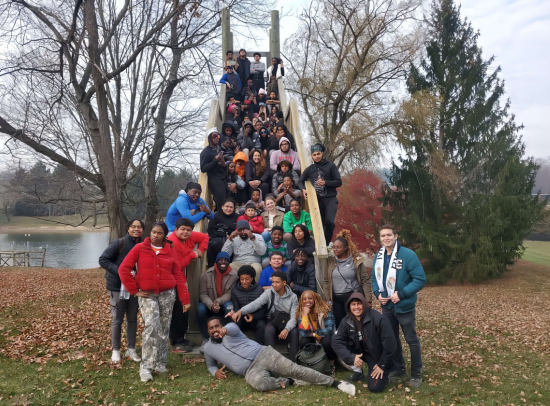
by Ileana Martinez | Jul 11, 2024 | Affiliate News
In the vibrant heart of Washington, DC, a dynamic spirit of learning and achievement ignites the Multicultural Career Intern Program (MCIP) corridors. More than just a family, MCIP has cultivated an entire community—a tapestry woven from its members’ diverse voices, backgrounds, and experiences. In this bustling hub of ambition and collaboration, individuals unite in a shared pursuit of academic excellence and personal growth.
MCIP is where dreams take flight, barriers are shattered, and lives are transformed for the betterment of oneself and the uplifting of all touched by its profound influence. Welcome to MCIP, where the journey of discovery knows no bounds. “Our focus is on preparing young people to succeed in academics and to be leaders in their community,” says Maria Tukeva, MCIP Founder. “This also means becoming leaders in the quest for social justice, and we do this through providing them with educational experiences that help them become designers of their future,” she adds.
The year was 1979 when a beacon of hope first emerged on the educational horizon – the inception of MCIP. Founded with a noble purpose, MCIP aimed to cater to the overlooked potentials of promising students, many of whom hailed from low-income backgrounds and belonged to linguistic minority groups. “From the beginning, we had a long-standing commitment to college and career success for not only Latino young people but all young people of color and that as a school and its associated foundation, they were and are today our number one priority,” she says. Yet, Tukeva saw that these bright minds were slipping through the crevices of the SER America · Spring 2024 16efficient model where the school does instructional services during the day. MCIP does enhanced and extended instructional services after school through the evening. Our efficiency benefits every student because we have different grants that complement what the school does. It perfectly complements the instructional vision and the idea of 100% college attendance preparation and resilience. If college is not attainable, we endeavor 100% career viability, so no child is left behind.” conventional public schooling system or had already been discarded from its confines. Maria identified many factors contributing to this educational exodus: an absence of cultural and linguistic sensitivity, systemic apathy, and a deficiency in teacher training and support. Moreover, low expectations existed for student achievement, inadequate curricular offerings, and a heavy reliance on punitive measures like suspensions and expulsions.
Maria saw a better way, and so did the community that joined her. To combat this educational injustice, they embarked on a journey over three decades ago, initially welcoming 40 students who had either been pushed out or had willingly dropped out of the District of Columbia public schools. By the close of a decade, in 1989, MCIP had blossomed into a full-fledged alternative school, serving a daily cohort of 600 students. This marked the genesis of BMHS – Bell Multicultural High School – born from the merger of MCIP’s core instructional program with the Bell Career Development Center.
Despite many challenges, MCIP surged forward, adapting its methodologies to meet the evolving needs of the BMHS student body. A significant milestone was reached in 2008 with the merger of BMHS and Lincoln Multicultural Middle School, giving rise to the Columbia Heights Educational Campus (CHEC), a groundbreaking institution spanning grades 6 through 12 – a first in Washington D.C. history.
Along the way, Kapindi Kroma joined MCIP and helped Maria and the leadership team expand services to fulfill the mission. Today, he serves as Executive Director of MCIP. “Our programs are run as an efficient model where the school does instructional services during the day. MCIP does enhanced and extended instructional services after school through the evening. Our efficiency benefits every student because we have different grants that complement what the school does. It perfectly complements the instructional vision and the idea of 100% college attendance preparation and resilience. If college is not attainable, we endeavor 100% career viability, so no child is left behind.”
For Maria and Kapindi today, inclusiveness at MCIP is more than just a word. “One thing that we realized when students returned from the pandemic was that engagement was never what we wanted it to be,” says Maria. “After the pandemic, it was even more challenging, and students had decided to do other things. So, we realized we had to change how we were doing things. We needed to know what they wanted, so we’ve focused on student voice and choice over the past two years. We are incorporating what students wish to do in everything from the cafeteria food to the curriculum to how we do the master schedule for the day.”
Kapindi echoes those sentiments and speaks of the strength that comes from a united effort. “Voice and choice are powerful, and the MCIP board has always had student representation. Our bylaws call for at least three student representatives. Now, the school is incorporating that voice and choice philosophy into its strategies and structures. We instill in all of our students that if they take the work seriously, there is nothing that they can’t do. This belief is why we have a delinquency intervention program plus targeted literacy intervention. During the school day, we ask struggling students to come to one-on-one sessions where they can counsel and instruct so they know we care and we’re here to help them succeed.”
This union has broadened MCIP’s outreach and diversified its efforts to encompass middle school education. Today, MCIP stands as a beacon of educational equity, offering myriad evidence-based instructional and support services to bridge the achievement gap for the 1400 students and families comprising CHEC. MCIP continues to pave the path toward a brighter future for all through unwavering dedication and innovative approaches.
“It is wonderful that SER National recognizes MCIP, but mostly because that’s how we started,” recalls Maria fondly. “We would not be here if it weren’t for SER National. We go back to 1979 when I first worked on the proposal for the school with a team of people from SER National. Seeing how far this initiative has gone and can continue for many years is exciting and personally rewarding to experience,” she adds.
Kapindi speaks of the ambitious opportunities beyond the horizon that MCIP is also working to realize. “We are on a journey to create the nation’s first youth-run community development corporation, or CDC, where students come to school and learn the tools to solve problems within their community. Their education is no longer something that they must wait ten years to start applying. Now, reading makes sense, and math makes sense. So do negotiation debates and understanding contracts. All these types of things are relevant and important right now. When we create the CDC, it will be student led and a component to really refining public education that rarely ever changes.”
What does Maria see ahead? The path is promising for her and closely linked to those who will help shape it. “I see us becoming even more of a youth-oriented agency where we incorporate youth voices, not just like a little committee here and there, but everywhere because they are our future. I see us as an organization incorporating them into everything we do and create for tomorrow. What we can achieve is limitless and exciting.”
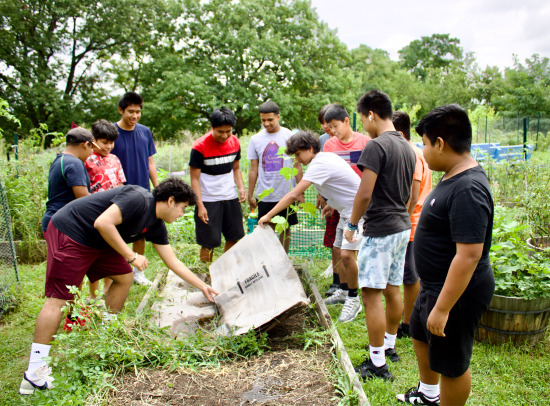
by Ileana Martinez | May 7, 2024 | Affiliate News
In Pittsburgh, a city steeped in the history of America’s industrial boom and change, a new collective of voices is being heard. The sound is different, reflecting a tapestry of fresh cultural experiences, and its source is Casa San Jose. There, Latino families and individuals are coming together and creating an opportunity to infuse Pittsburg with a new vitality for the future.
Established in 2013 by the Sisters of St. Joseph of Baden, Casa San Jose was born out of a deep-seated commitment to uplift and empower the region’s burgeoning Latino population. The richly faceted social services agency embodies the resilience and empowerment that define the organization’s mission.
Monica Ruiz, Executive Director of Casa San Jose in Pittsburgh, Pennsylvania, readily acknowledges the challenges and growth of the Latino community. She states, “I think that for us here in Pittsburgh, PA, Latinos are less than 2% of the population, but we have grown more than 80% in the last ten years. Before, Latinos came for work and then left to return to their homes, returning seasonally. But then, they began to settle here and stayed to raise their families.”
As the city witnessed an influx of newcomers, Casa San Jose emerged as a lifeline, filling in the gaps for services that the community desperately needed but were unavailable. Monica’s vision extended beyond immediate aid; she aimed to create bridges within institutions and processes that have seen little change in decades.
Monica laments, recounting the countless instances where community members were stranded because of a lack of linguistic support in crucial institutions. “Language access remains a significant barrier,” Ruiz states. “Language access must be our greatest barrier at present. You go into a city or county office, and they have nothing in Spanish for residents. Even healthcare services lack language and cultural accessibility. For example, we only have two Spanish-speaking pediatricians,” she says.
The organization’s staff reflects the community they serve. Ruiz notes, “We have a staff of 27, and out of these individuals, maybe six or seven were born here in the United States. Everyone else is from somewhere else or has received services from us. Their lived experience is invaluable as they now help others. We have a great mix of people,” Monica beams, highlighting their shared experiences as immigrants and their dedication to the cause.
“Casa San Jose fills gaps in services for the community,” Ruiz emphasizes. “However, we want people to acquire the skills and knowledge to learn how to navigate the services themselves in this city. This is a very complex process, but we’re building resiliency within folks as they experience success,” she adds.
Casa San Jose is a resource hub for Latino immigrants seeking assistance and guidance from weekly clinics and food pantries to Know Your Rights sessions and summer camps. Its comprehensive programs encompass social services, emergency aid, community advocacy, English language classes, mental health support, housing assistance, and specialized programs for children with autism.
As importantly, Casa San Jose champions amplifying inclusion at every level within the larger community, ensuring that the voices of those they serve are heard and elevated. “Representation is essential,” emphasizes Monica. Particularly important is pushing for inclusivity in decision-making processes in programs and services that impact the Latino population. Ruiz explains, “Representation means having people with a voice and viewpoint authentic to the issue or need we are addressing in our city.“
One central area of focus of Casa San Jose is working with local youths through several of the organization’s programs: Jóvenes Con Propósito fosters a vibrant community of Latino youth, championing immigrant rights and igniting social change. With a firm belief in the current leadership of today’s youth, the program meets weekly during the academic year, nurturing empowerment and activism.
Puentes Hacia el Futuro, tailored for ages 6-14, cultivates cultural identity and leadership skills through trust-building activities, discussions, and educational pursuits, preparing youth for a dynamic future blending Latino and American cultures.
Campamento Sonrisa offers an enriching summer experience for youths aged 7-14, blending education, outdoor adventures, and sports. Participants enjoy nutritious meals throughout the structured camp, including breakfast, lunch, and snacks. The elementary session runs from June to July, while the middle school session spans from mid-July to August, providing an inclusive opportunity for all applicants at no cost.
Casa San Jose serves multi-generational families in tangible, practical ways every day. For its stakeholders, it is both about the here and now and the future of the Latino comunidad. “We are learning from other larger cities with decades of experience working within significantly bigger Latino populations,” says Ruiz. “At the same time, I hope that we can offer smaller communities near and around us an example of how to build resilience and help our people not just survive but thrive for years to come,” she adds.
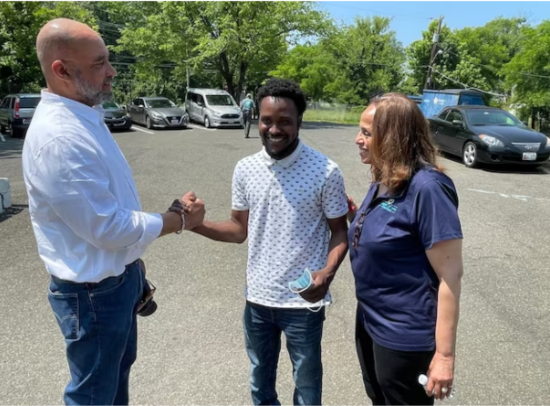
by Ileana Martinez | Jun 16, 2023 | Affiliate News
Mission of Love Charities, Inc, a nonprofit organization and part of our SER Network of Affiliates, was recognized in the Washington Post this month. Click here to view the full article!





